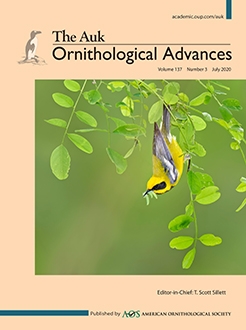The prebasic molt is a perilous period for songbirds, characterized by heightened energetic demands and vulnerability to predators. Given these vulnerabilities, songbirds are under selective pressure to locate and use quality habitat during the prebasic molt, potentially resulting in site fidelity between years. In this study, we aimed to determine how differences in breeding and molting activity affected site fidelity for a diversity of species at the landscape scale. To accomplish our objective, we used 31 yr of banding data from northern California and southern Oregon for 16 species of songbirds with Cormack-Jolly-Seber analyses and weighted linear regression models to assess the effects of molting and breeding activity on the probability of a species returning to a site in subsequent years. Despite substantial variation in site use for breeding and/or molting, each study species had at least some locations that were used for both breeding and molting. Captured breeding birds (n = 18,574) were much more common than molting birds (n = 7,622). Breeding activity was positively correlated with higher site fidelity for 10 of the 16 species, while we found little evidence of a relationship between molting activity and site fidelity. Only the Dark-eyed Junco (Junco hyemalis) showed increased site fidelity with increased presence of molt activity. It is likely that a shifting mosaic of food resources during the post-breeding period drives dynamic movements of songbirds in search of the necessary resources to successfully complete their annual molt.
LAY SUMMARY
Birds rely on a myriad of food resources and habitats to reproduce and successfully complete their annual molt.
We used long-term capture data to assess how 16 species of songbirds varied their use of different habitats during the breeding and molting seasons in northern California and southern Oregon.
Additionally, we determined how breeding and molting activities influenced the chance of an individual returning to a site year after year.
While breeding increased an individual's chance of using the same site between years, we found little evidence that molt affected an individual's propensity to return to a site.
Unlike breeding territories, birds appear less likely to return to the same area to molt year after year. This flexibility is likely necessary to locate dispersed and unpredictable food resources during the molting season.






